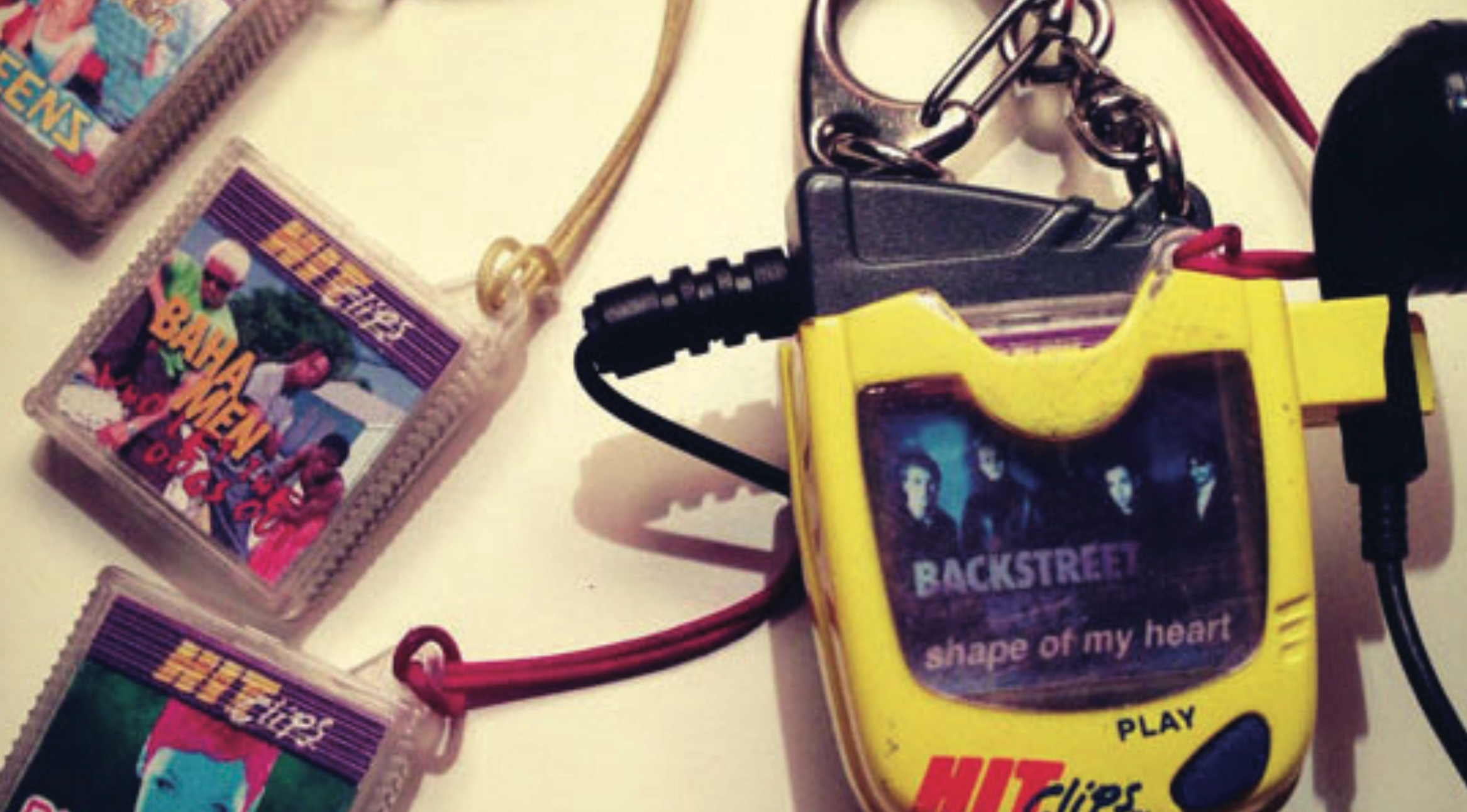Nineties kids are proud to be 90’s kids. Born in 1994, I would know, succumbing to all the ridiculous ’90’s trends: throwing Beanie Babies across my basement with the neighborhood kids, flicking Crazy Bones down the lunch table in elementary school, trading Charmander for some better Pokemon, (if that is even possible), and breaking up high school pool parties with gigantic plastic water-guns. I can still remember Zack Wilkins trying to choke me with my own Puka shell necklace in the second grade. Rough times. Back then I wanted frosted tips and a chain-link wallet, but my mom never budged.
There is another ’90’s trend that we tend to forget about until someone mentions it and we all scream, “OMG! YES!” Does HitClips ring a bell? A bell sounding like teenage Britney and Justin straight out of the Mickey Mouse Club, and smelling like a McDonalds Happy Meal?
For those of you who are not familiar with HitClips, think of what filled the confusing void in between CDs and MP3s, Walkman, and Apple. HitClips was an audio player that you would insert small digital chips into, which played ultra low-fi mono clips of current pop songs. Such gems as Avril Lavigne’s pop- angst “Complicated,” Backstreet Boys’ mega-hit “I Want It That Way,” and *NSYNC’s “Bye, Bye, Bye,” along with 150 more were teeny-bob favs.
There was a catch, though. Tiger Electronics, maker of the HitClip, teamed up with prominent labels like Atlantic Records, Jive Records, Zomba Label Group, and Capitol Records. They worked together to sell music but in different ways. The record companies wanted to sell albums, which HitClips did not provide. All they provided were one- minute clips of each pop song. Therefore, young listeners would buy or acquire the HitClip player and tracks through McDonald’s Happy Meals or Lunchables, and the tweens would beg their parents for the whole album, simultaneously, trying to collect as many clips as possible. This marketing scheme, genius and manipulative (as the successful ones always are), made Tiger Electronics more than 80 million dollars between 1999 and 2002.
For those years, one would be able to see post-it sized sex symbols such as pics of boybands straddling chairs or Beyonce’s fierce stare alongside childhood icons, like Pikachu, on any US playground. These clips transformed music into a competitive game for the masses. HitClips could be attached to backpacks, acting dually as keychains that were traded during lunch and recess. They were not inexpensive, running at about four dollars a clip, unless you purchased a Kraft Foods’ Lunchables or McDonalds Happy Meal, where they were tossed in for free. Kids became the main target audience for this music, food, and electronic ménage à trois when Toys “R” Us jumped in on the cluster-f*ck, selling more than just the original product.
HitClips accessories featured a mini HitClip boombox and colorful variations of the simple player. In 2003, Tiger Electronics launched a minidisc version of HitClips, which failed due to the growing popularity of MP3s, marking the sudden downfall of HitClips’ timely, innovative vision. The iPod, released in 2001, started to gain popularity, and Macintosh quickly became more than just a type of fruit.
HitClips was an idea that blossomed at the perfect time when music needed a new image for the younger demographic, better known as the snotty kid hanging upside down in the MacDons PlayPlace while his or her mom stood in line waiting for chicken nuggets. This idea, this new stylized music player combined with golden marketing skills, started a freakishly speedy fad, which may have stayed around longer if not for Steve Jobs and his more futuristic vision. While Tiger Electronics VPs were caught thinking “The i-WHAT?” they should have been proud of not just selling music and manipulating young minds, but of creating pop superstars all 90s kids still hear in their heads. Proud of creating such a unique little device and somehow making it cool. But most of all, they should be proud of featuring Destiny’s Child’s “Survivor,” helping to make Beyonce, Queen B, the superpower she is today.



